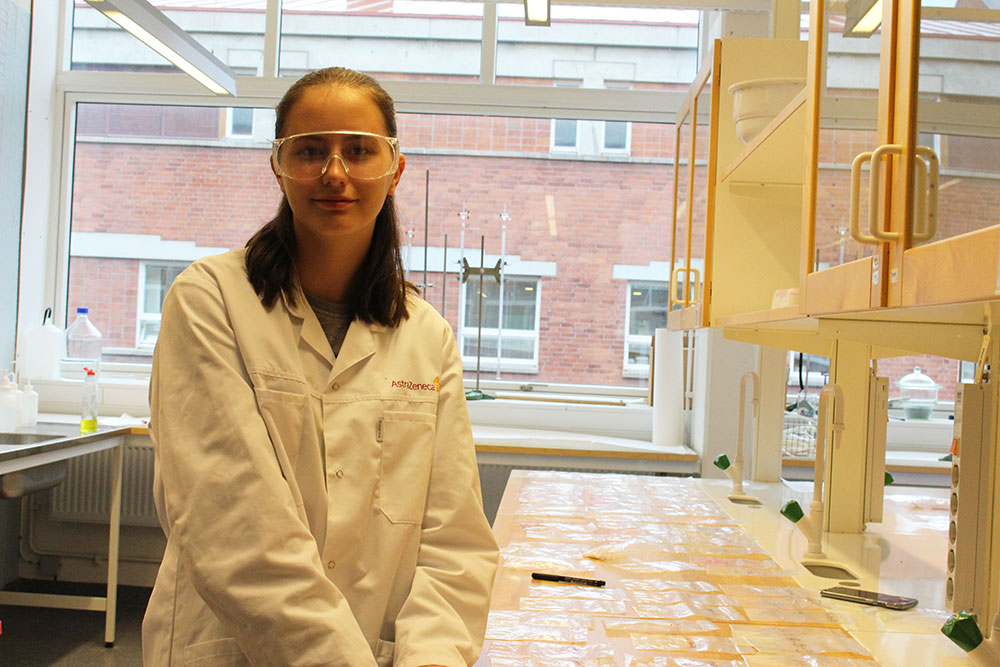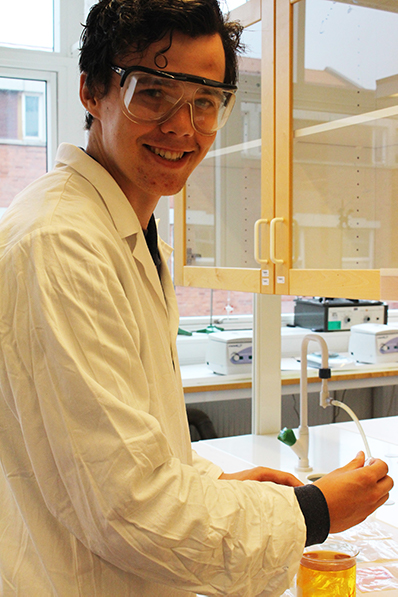Summer research school gathered interested youths

During two weeks of summer break, 52 school pupils have spent their days at the CBH school doing laborations and learning more about science and technology.
Since many years, an annual summer research school is organized at the CBH school for youths between ages 14 and 17. The association Unga Forskare holds the event, which is sponsored by AstraZeneca.
In the last two weeks of June, interested youths have taken part in laborations and have among other things also listened to lectures by Christer Fuglesang, professor in space physics and professor Stefan Ståhl from the CBH department Protein Science.
Lisa Karlsson from Älvsjö has recently concluded ninth grade. She was inspired to apply for the summer school by her older brother, who had participated before and enjoyed it.
– It has been fun trying out things that you haven’t done at school, probably because there is a lack of resources and time. These laborations take longer time, perhaps a whole day. It’s fun to try out new experiments, she says.
The purpose of the summer research school is to inspire young people to pursue a scientific and technological path, which according to Unga Forskare is essential to meet the challenges of the future, such as the climate crisis, but also to achieve the goals of Agenda 2030. There is a shortage of natural scientists, technicians and engineers and a decline in the number of applicants to related high school educations.
For Lisa Karlsson, who says she has always thought that she will work with chemistry in some form, the summer research school has helped her clarify her interest to herself.
– I think many people don’t think technology seems so fun because the school doesn’t provide a lot of technically related in the education. There is one hour a week and mostly natural science, which makes people not so interested. It can be about physics with a technical orientation, instead of it being based on technology, she says.
In CBH’s chemistry course lab, a group of ninth-graders are working on a laboration in experimental reactions.
The pupils should mix unknown liquids and powders and note changes in temperature, colour and e.g. gas formation. At the end of the day, they shall come with claims about the substances, which they then shall test.

– The pupils learn how to work in a scientific way, to write down all observations they make and enter them in a chart in a way that is clear and easy to observe. But above all, there are a lot of cool colours, says supervisor Derk de Muinck, en engineering student from Chalmers.
– I think it’s fun because we get some surprising results and then you get to think about why something happened, says Johan Hahlin from Sollentuna.
He thinks it’s important that more people become aware of and educate themselves in science and technology to help drive the societal development forward and he plans to study the natural science program at high school.
– Firstly, one has learned a lot about the subjects through the lecturers and the supervisors, who are very competent. But we have also received practical experience that the school doesn’t offer. We have received both theory and practice, which is a good preparation for the future, says Johan Hahlin.
Text: Sabina Fabrizi